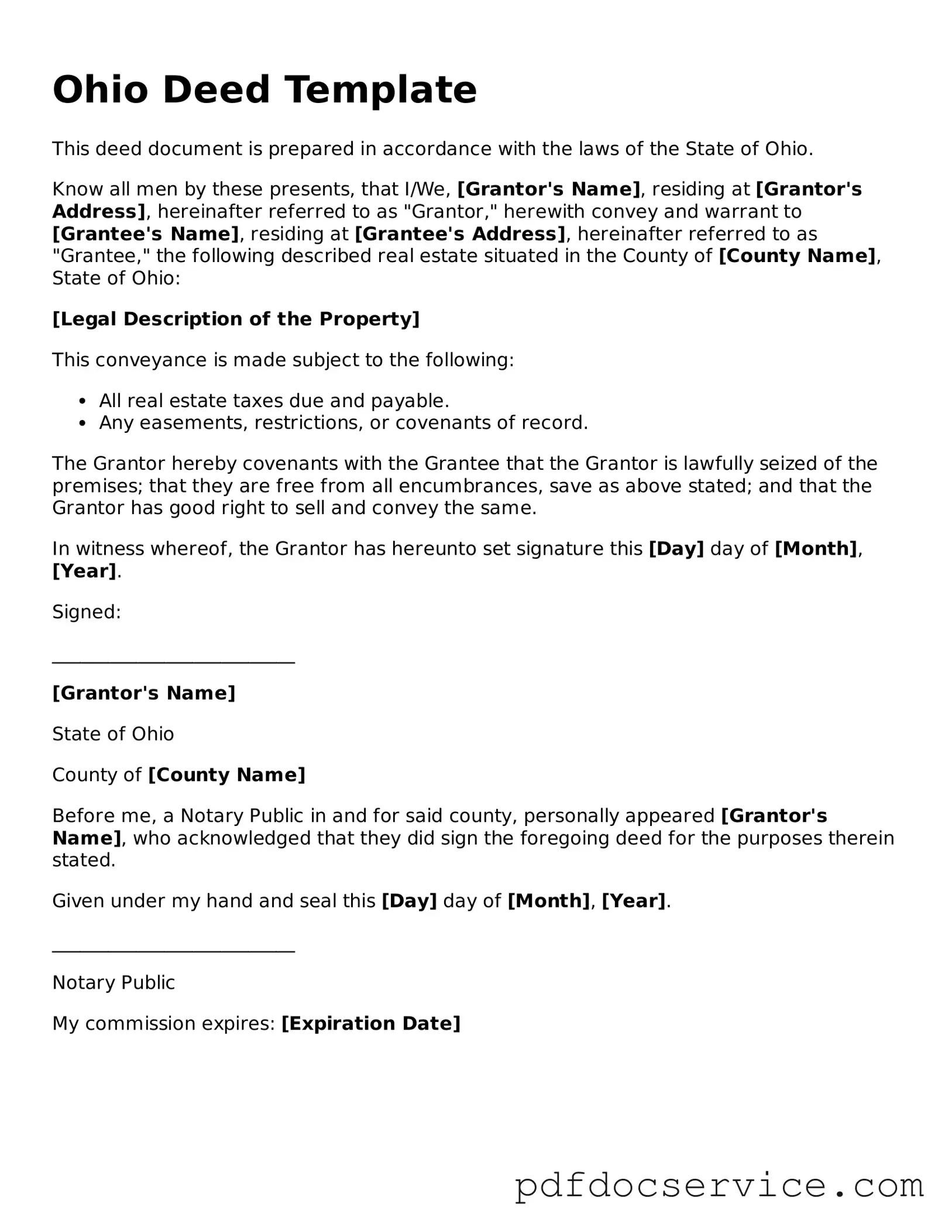In Ohio, the deed form serves as a critical legal document that facilitates the transfer of property ownership from one party to another. This form includes essential details such as the names of the grantor (the person transferring the property) and the grantee (the person receiving the property), along with a clear description of the property being conveyed. Additionally, the deed outlines any relevant considerations, such as the purchase price or other terms agreed upon by the parties involved. It is important for the deed to be signed, notarized, and recorded with the county recorder's office to ensure that the transfer is legally recognized and enforceable. Different types of deeds, such as warranty deeds and quitclaim deeds, may be used depending on the circumstances of the transfer and the level of protection desired by the parties. Understanding the nuances of the Ohio deed form is essential for anyone involved in real estate transactions, as it helps to clarify ownership rights and responsibilities, providing a clear legal framework for property dealings.
